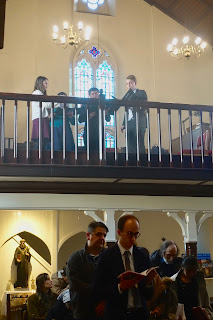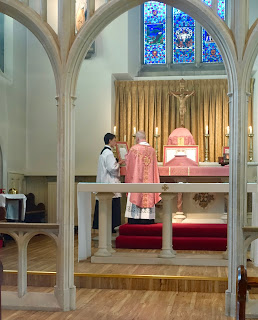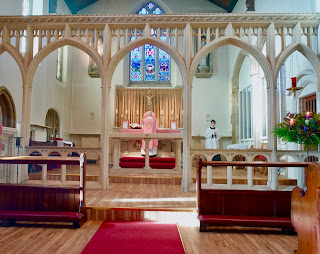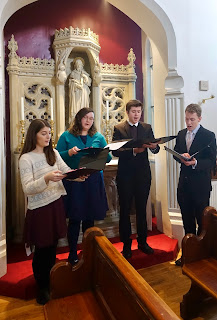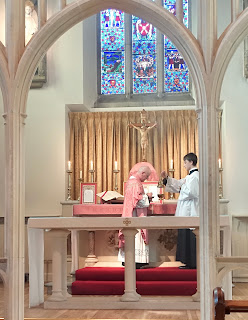Everyone's doing it - making bread while self-isolating at home. Supermarkets have reported a massive surge in sales of flour, and many people have found it difficult to buy baker's yeast. But who needs yeast when you have your very own sourdough culture? I have had a few people asking me about sourdough, so I've cobbled this post together from a series of Facebook comments. I hope it's useful.
Sourdough is magic - you take flour and water and a pinch of salt and, after catching some wild yeasts from the air and the wheat itself, turn those basic ingredients into the tastiest bread imaginable. Sourdough is also incredibly easy to make -- it's hands off, and doesn't need to be a 'lifestyle'.
I hope you find this useful.
Easy sourdough bread from scratch
If you believe everything you read on the Internet you'd never bother making sourdough bread unless you wanted it to take over your life. I'm too impatient (and lazy) to have my bread be a lifestyle, but I'm also a foodie. As far as I'm concerned there's no tension there -- lazy sourdough is as good as intensive labour sourdough, or at least good enough. Again - don't let the perfect become the enemy of the good — or even the good enough.
About 15 years ago I was given a sourdough starter (before I figured out that I could catch my own yeasts -- "kitchen critters" as my children call my sourdough starter & kefir). I had loads of little kids and was pregnant and busy and, as I remember it, sourdough was easy, fast and tasty. I stopped making sourdough about 10 years ago but this week, running out of yeast, decided to make it again. I looked through cookbooks and went online: every single set of instructions I found was a huge faff and my heart sank. Had I completely forgotten how to make sourdough? Had I wiped memories of spending hours tending each loaf? I was positive I hadn't, so decided to just bodge it and see what happened -- and what happened was easy and delicious. I don't think this is because I'm a domestic goddess but because sourdough can be incredibly hands-off and simple if you want it to be. You can also make a lifestyle out of it if you want to. I'm sure that the high-input bread is better than my lazy sourdough, but I'm not convinced that it is better enough to make me want to change my ways. If you have the time and the inclination do explore YouTube there are loads of inspiring bakers with a range of sourdough methods. I won't judge you, I might even be a little bit jealous that you have the time to do it, but I'm too busy, impatient (and lazy)... so this is what I have done over the past few days...

Catch yourself some wild yeasties...
You first need to make a sourdough starter from flour and water. There are lots of ways to do this, but this is what I did: it's really, really easy (I'm a lazy cook - did I mention lazy?). The process takes about 4 days. I used spelt flour, but any flour can be used. Many people like to use rye flour for the starter, but I didn't have any on hand. Use what you have.
Day 1 -- in a plastic or glass container (with a lid -- can be baking paper with an elastic band over a jar, a saucer over a cup, or in my case an Ikea plastic container with an ill-fitting lid) put 50 g wholemeal flour and 100mls water and mix well. Cover and leave in a warm place (airing cupboard etc ... not directly on a radiator, although on a breadboard on a radiator is ok so no direct heat through the bottom.). Day 2 -- repeat day one's instructions. Day 3 -- add 50g flour / 50mls water, combine, cover, keep warm. Day 4 -- repeat day 3. By day 3 you should see bubbles rising to the surface if it's been kept in a warm temperature. By day 4 you will hopefully have a sourdough starter ready to work with.
Because our house is very cold (it took me a couple of days to find somewhere with a consistent temperature -- next to some hot water pipes in my wardrobe!) mine looked fairly feeble on day 4 but it still made good bread.
Also -- while making the starter it's better to use mineral water as the chlorine in tap water may inhibit the growth of yeasts. Once it’s a healthy culture your sourdough starter will be strong enough that the amount of chlorine in tap water won't make any difference at all. If you don't have any bottled water on hand, just let some tap water sit for 24h until the chlorine evaporates.
The reason for using wholemeal flour for making a starter is that the husks tend to have residual natural yeasts on them which gets things going faster. I'm quite sure that it's possible to do the same thing with a white flour -- you might want to leave the pot open in your kitchen for an hour or so each day to catch some of the wild yeasts in the air. Apparently if you have been baking bread there will be greater numbers of yeasts floating around.
Do what you can with what you have -- don't let the perfect be the enemy of the good.
Next -- how to turn the bubbly sloppy mass of gloop into bread...
Three easy ways to make sourdough bread from your starter:
Method 1 -- instinctive method.
For this bread I tipped about half my bubbly starter into a bowl, and added flour and water and salt until I had a dough that felt more or less right. I committed the cardinal sin of using a KitchenAid dough hook to combine the lot. I left the dough to prove for a few hours. Then played with it a bit (because I felt like it and it was relaxing to play with -- I wanted to see the stretch <<n.b. you're not supposed to do this with sourdough!>>) then divided it between a lined round cake tin and a lined loaf tin (it was very wet -- wet sourdough makes lovely moist bread -- so wouldn't have held its shape on a tray). Left it to rest for half an hour or so then popped it into the oven for 35 minutes at 220°. It rose just enough and tasted great. Nice crumb and crust.
Conclusion: next time I wouldn't play with the dough.
Method 2 -- 1-2-3 -- no work at all.
The night before baking I took 1 cup of starter, 2 cups of tepid water (22°ish), and 3 cups of flour and mixed them together by hand (wet hands mean that the dough won't stick to your hands). Needed to add more flour to get consistency right. Left in cold kitchen with a plate over the mixing bowl to prove overnight. In the morning tipped the risen dough into a round lined cake tin and popped it into a large casserole dish that had been heating up in the (hot) oven (Americans seem to cook their sourdough in cast iron Le Creuset style casserole dishes -- they call them 'Dutch ovens' --- so I thought I would try this method). Cooked for about 40 minutes. All good. Lovely loaf, beautiful crumb, tasted divine. Not sure what the point of the Dutch oven was though -- and it made the whole thing a bit of a faff.
Conclusion: would repeat but without Dutch oven -- probably putting a pan of water in the bottom of the oven to maintain moisture levels (which as far as I can tell is the point of cooking inside a pot).
Method 3 -- adapted from Andrew Whitley's "Do / Sourdough / Slow bread for busy lives" spelt sourdough recipe
This is my favourite method. Earlier in the day I took 50g of my starter, added 150g of flour and 100mls of water, mixed thoroughly to a paste, covered and put in a warm place (I used my Instant Pot on the lowest 'Yoghurt' setting -- this was a revelation: I love my IP more than ever now -- but your original warm place, airing cupboard etc. will be fine). A few (the book says 3-4, I left mine for 6+ because I was busy) hours later the sourdough will have bubbled and probably doubled in size.
To make the bread: take 450g flour, 8g salt and 275mls tepid (22°-25°C) water and mix into a dough. Leave covered for half an hour then knead briefly. Add the production sourdough (the starter, flour and water you've been keeping in a warm place. Knead it briefly to mix. Use your instinct to add more water or flour to get a good consistency. The nice thing about sourdough is that the yeast organisms multiply according to the amount of food (flour) they have -- they colonise whatever you give them so it's very difficult to over- or under-yeast a bread -- it's very forgiving. At this point I departed from the book and proved my dough overnight in the tin (loaf shaped) in which I was going to bake it. I left it on a cold windowsill in the kitchen covered with a clean floured tea-towel. In the morning I heated the oven, cut slits in the top and popped it in at (fan) 220'C for 10 minutes then 200'C for 35 minutes. I should have taken it out at 30 mins but ignored the timer...
Total hands-on time about 15 minutes. Loaf is gorgeous. Absolutely delicious. I have repeated this three times now with the same results. I have also done it with regular flour which worked but needed a bit of adjustment as the moisture levels were a little different (use your instinct: you want your dough to be wet but you need to be able to pick it up to put in a baking tin). Don’t forget to flour both your tin and the bottom of your loaf.
What to take away from the above? That there's no one 'right' way to make sourdough, but even bodging things together will give you a respectable, tasty and healthy sourdough loaf. Baking sourdough is more of an art than a science -- once you understand the theory of how it works, and gain confidence by realising how forgiving it is, you can experiment and find a way to make sourdough work for you.
Some photos:
This is what my starter looks like this morning after a night in the cold kitchen. Each time you want to make a loaf take some of your starter and 'refresh' it by feeding it some flour and water (as in method 3) a few hours before you need to put your loaf together. You can either keep a 'master' starter in the fridge to do this (feeding it at least once a month to keep it alive) or simply keep back a few tbs of starter each time you make a loaf to feed and use for your next loaf.
Loaf from Method 2: baked in a round cake tin in a casserole dish.
What the dough for the above loaf looked like after proving all night in a cold kitchen. If you want to do a slow rise like this and have a centrally heated kitchen then put your dough into the fridge overnight.
Method 3 loaf: easy-peasy and perfect!
Work in progress (Armagnac optional!)
















